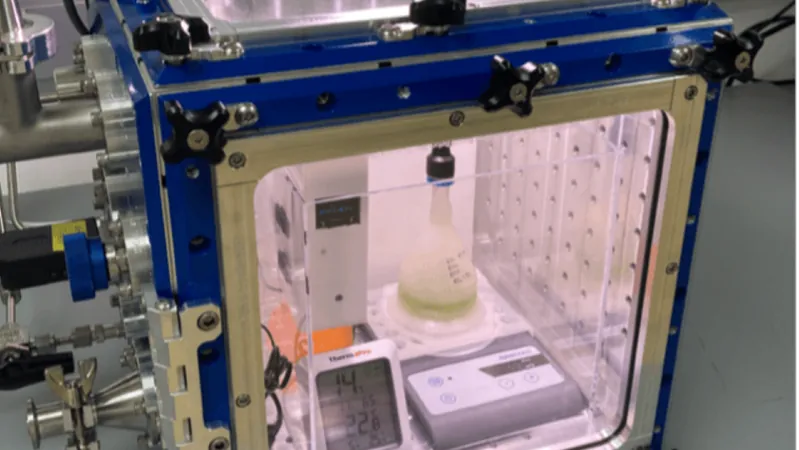
Revolutionizing Martian Habitats: The Algae-Bioplastic Breakthrough
2025-07-03
Author: Wei Ling
Creating Self-Sustaining Habitats on Mars
A groundbreaking breakthrough led by Harvard's Robin Wordsworth, a prominent figure in Environmental Science and Engineering, has revealed the potential for sustainable life on Mars. His team has successfully cultivated green algae within bioplastic shelters, mimicking conditions found on the red planet.
Wordsworth states, "If we construct habitats from bioplastic that can sustain algae, those algae could then produce more bioplastic. We could establish a self-sustaining, closed-loop environmental system that thrives over time." This innovative research is detailed in the latest issue of Science Advances.
Algae: The Key to Martian Survival?
In a series of lab experiments designed to replicate the thin Martian atmosphere, Wordsworth's team nurtured Dunaliella tertiolecta, a resilient type of green algae, inside a 3D-printed growth chamber made from polylactic acid. This biodegradable material effectively blocked harmful UV radiation while allowing sufficient light for photosynthesis.
Conducted at Mars-like atmospheric pressure of just 600 Pascals and rich in carbon dioxide, the experiments overcame the challenge of liquid water stability at such low pressures by using the bioplastic chamber to maintain a favorable pressure gradient.
The Future of Space Colonization
Previously, Wordsworth's research indicated the feasibility of local Martian terraforming with silica aerogels, which replicate Earth’s greenhouse effects. Combining the algae growth experiments with aerogel technology could significantly address the challenges of temperature and pressure, paving the way for sustainable extraterrestrial habitation.
Looking ahead, the team aims to test their habitats in vacuum conditions, which would be essential for lunar and deep-space ventures. Plans are also underway to create a fully operational closed-loop system for habitat construction.
Wordsworth concludes, "The notion of biomaterial habitats is not only fascinating but holds the key to enabling human life in space. As this technology evolves, it promises benefits for sustainability initiatives here on Earth as well."





 Brasil (PT)
Brasil (PT)
 Canada (EN)
Canada (EN)
 Chile (ES)
Chile (ES)
 Česko (CS)
Česko (CS)
 대한민국 (KO)
대한민국 (KO)
 España (ES)
España (ES)
 France (FR)
France (FR)
 Hong Kong (EN)
Hong Kong (EN)
 Italia (IT)
Italia (IT)
 日本 (JA)
日本 (JA)
 Magyarország (HU)
Magyarország (HU)
 Norge (NO)
Norge (NO)
 Polska (PL)
Polska (PL)
 Schweiz (DE)
Schweiz (DE)
 Singapore (EN)
Singapore (EN)
 Sverige (SV)
Sverige (SV)
 Suomi (FI)
Suomi (FI)
 Türkiye (TR)
Türkiye (TR)
 الإمارات العربية المتحدة (AR)
الإمارات العربية المتحدة (AR)